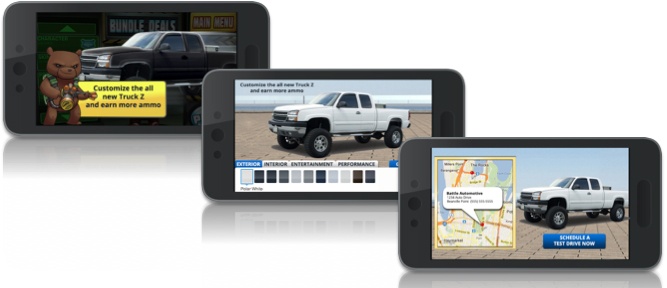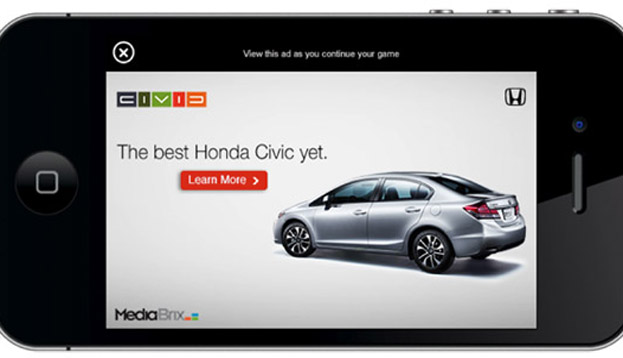Editor’s Note: The following is an exclusive contributed article by Diana LaGattuta, VP of Marketing at mobile ad platform NativeX.
By Diana LaGattuta
If there’s one golden rule for advertising it’s probably to go where your audience is. This maxim has taken on new meaning with cookie targeting. Advertisers spent $90 billion last year identifying, tracking, and retargeting consumers as they surfed the web on PCs about 74 minutes a day, all in the name of getting in front of the right people. Even with the amount of effort advertisers put into reaching the right users, there’s still 158 minutes the average person spends on their mobile device every day that go unaccounted for. You would expect ad dollars to correlate with consumption. However, last year only 10 percent of ad dollars made their way into mobile. This is indicative a huge disconnect between where consumers are spending their time versus where brands and agencies are trying to reach them. The fact is, people spend the lion’s share of their time on mobile playing games but the advertising industry has yet to catch up.
One reason ad dollars have been slow to roll in is that when brands did test mobile they tried advertising on Facebook first. It’s no secret that Facebook’s early offerings on mobile were largely considered a failure and brands started pulling back millions of ad dollars. Even though Facebook’s latest quarterly earnings show they are turning things around, this was a setback for mobile advertising.
Another reason for the hesitance to go after mobile is the ineffectiveness of ad formats like banner ads. Banner ads are clunky, hard to read, and often take away precious real estate on tiny screens. It’s gotten so bad that, as HubSpot pointed out, consumers are more likely to complete Navy Seal training than click a banner ad. Brands and agencies are still uninformed and missing out on mobile advertising’s biggest sweet spot: mobile gaming.
A recent report from Flurry found that mobile users spend 80 percent of their time using apps. More importantly, the number one activity was not Facebook, it was time spent playing mobile games. Mobile gamers are everywhere and everyone. eMarketer has stated by the end of this year there will be 126 million mobile gamers in the U.S. alone. By 2015, that number will reach half of the U.S. population. It’s hard to argue the stats – gaming is and will continue taking the majority of eyeballs on mobile. But that’s only one reason why mobile gaming is the new sweet spot for brands. Another, and perhaps more importantly, is what brands can do in mobile games that they can’t do anywhere else.
Before I get to that, be honest with yourself for a moment. When is the last time you really paid attention to an ad Most of us intentionally skip commercial breaks with DVR, use ad-block in our browser, and mute audio during Pandora commercial breaks. We avoid ads because they are annoying, interrupting, and often irrelevant. However if done right, mobile gamers not only “put up” with advertising but actually engage with it in exchange for receiving in-game perks.
Nintey percent of mobile games are free and rely on a combination of in-app purchases and advertising for revenue. In-app purchases help complement the experience by unlocking game content, offering additional perks, or in-game items. Players often need virtual currency and have to choose between shelling out real money or engaging with an ad. Mobile gamers are such a unique audience because they are willing to engage with ads in games when they never would otherwise. As a result, brands end up capturing people paying attention and consumers get something they wanted.

For example, in exchange for more ammo, consumers could build and customize a real truck inside of an ad. Once completed, consumers have the option of scheduling a test drive. All this is done without the gamer ever having to leave the game.
Ad agencies no longer have to create outrageous messaging and intrusive audio that are interruptive and annoying. Instead, incentivized advertising brings engaged consumers to a brand for minutes at a time. The example above is just the tip of the iceberg when it comes to possibilities. Brands can jump right in to educating consumers with rich media interactions, videos, surveys, and mini-games that would be unrealistic to expect completion in any other medium.
There are two ways this can go from here. Brands and agencies that are just looking to push messaging out there will continue to use Facebook because it’s the safe bet. But there will be those who really want to engage with their audience in entirely new ways and have the courage to think boldly about mobile.
About the author
Named one of Business Insider’s 2013 Most Powerful Women in Mobile Advertising, Diana LaGattuta is an international marketing leader and pioneer in new media with global experience across the full range of marketing activities, including strategy, branding, advertising, product marketing, message development, event marketing, PR, digital marketing and social media. She has experience launching 5 mobile advertising businesses in the US, EMEA, and APAC: Enpocket, Sprint, Nokia, NAVTEQ, and NativeX.

